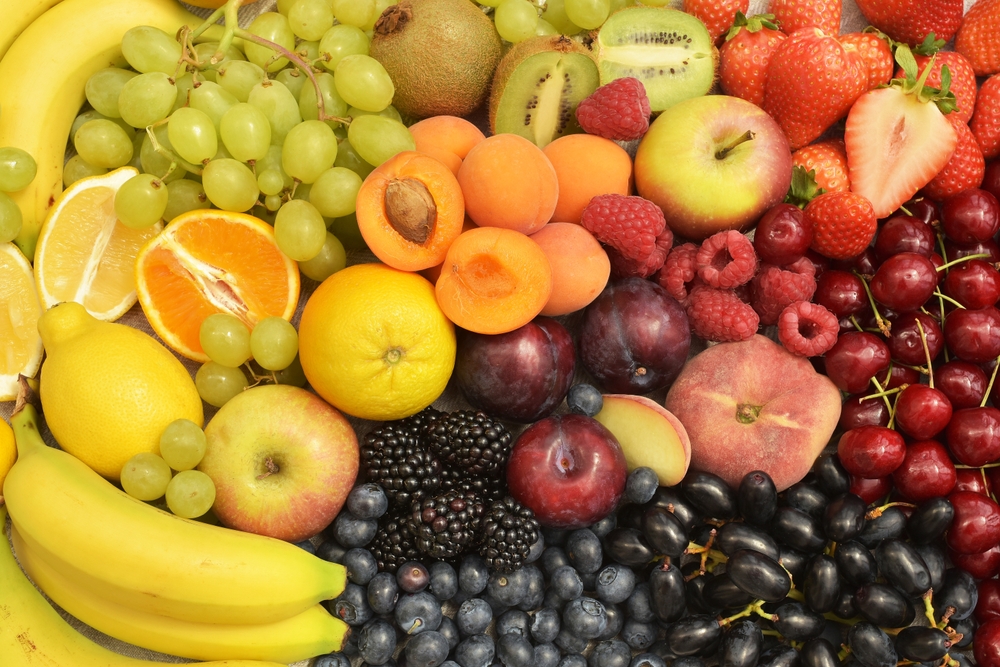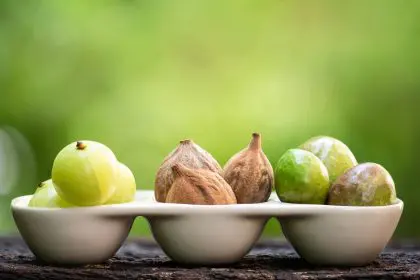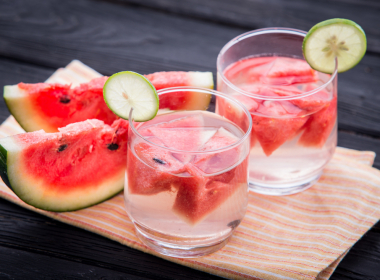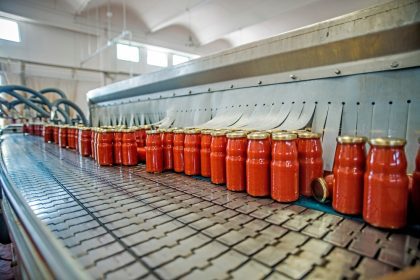That unassuming dried fruit you probably walk past in the grocery store could be the solution to your afternoon energy slumps. While spinach has long held the reputation as the plant kingdom’s iron powerhouse, dried apricots quietly contain significantly more iron per serving than their leafy green competitor. With approximately 3.5 milligrams of iron per 100-gram serving, dried apricots outpace spinach’s 2.7 milligrams, yet rarely receive recognition for their impressive mineral content.
This overlooked nutritional profile makes dried apricots a particularly valuable food for anyone seeking to boost their iron intake naturally, especially those following plant-based diets who often struggle to meet their requirements for this essential mineral. Beyond just iron, these golden nuggets of concentrated nutrition offer an impressive array of other health-supporting compounds that make them worth reconsidering as a regular addition to your diet rather than an occasional snack.
The impressive nutritional profile beyond just iron
Dried apricots contain a remarkable concentration of essential nutrients that extends far beyond their impressive iron content, creating a multifaceted nutritional package in a small, convenient form.
The iron content deserves special attention for its particularly bioavailable form among plant sources. While all plant-based iron presents absorption challenges compared to animal sources, the non-heme iron in dried apricots comes paired with significant vitamin C and organic acids that enhance absorption. This natural pairing helps overcome some of the bioavailability limitations typically associated with plant iron, making dried apricots a more effective iron source than many other plant foods with similar or even higher iron content on paper but fewer absorption-enhancing compounds.
Potassium levels in dried apricots surpass even bananas, with approximately 1,162 milligrams per 100-gram serving compared to a banana’s 358 milligrams. This substantial potassium content supports healthy blood pressure regulation, proper muscle function, and fluid balance throughout the body. For active individuals, this electrolyte replenishment can help prevent muscle cramps and support recovery from intense physical activity, while also counterbalancing the sodium many people consume in excess.
The vitamin A content appears in the form of beta-carotene, which the body converts to active vitamin A as needed. Each 100-gram serving provides approximately 180% of the daily recommended intake, supporting vision health, immune function, and skin integrity. This concentrated beta-carotene content explains the fruit’s rich orange color and provides powerful antioxidant protection against cellular damage from environmental stressors and metabolic processes.
Dietary fiber reaches impressive levels in dried apricots, with about 7 grams per 100-gram serving, supporting digestive health, blood sugar regulation, and cholesterol management. This fiber content explains the fruit’s traditional use as a gentle digestive aid in many cultures, particularly for those struggling with irregularity. The combination of soluble and insoluble fiber types provides both the beneficial effects of feeding healthy gut bacteria and adding necessary bulk to digestive contents.
Antioxidant compounds beyond just beta-carotene include significant levels of catechins, quercetin, and chlorogenic acids. These polyphenols help protect cells from oxidative damage, potentially reducing inflammation and supporting overall cellular health. Research suggests these compounds may help protect DNA from damage, support healthy aging processes, and reduce risk factors for various chronic diseases through their multifaceted protective effects.
Trace mineral content extends to copper, manganese, and magnesium, creating a broader mineral profile that supports numerous bodily functions from energy production to bone health. This comprehensive mineral package makes dried apricots particularly valuable for those seeking to address multiple nutritional needs simultaneously rather than focusing solely on iron intake, though their iron content certainly stands out as a highlight.
The historical significance as an energy food
Dried apricots have served as a portable energy and nutrition source throughout human history, particularly in regions where their cultivation originated and along major trade routes connecting civilizations.
Ancient Persian origins connect dried apricots to their earliest cultivation approximately 4,000 years ago, where they became a staple food valued for both nutritional and medicinal properties. The ancient Persians discovered that sun-drying apricots not only preserved the summer fruit for year-round consumption but also concentrated its nutritional content, creating a portable food that supported energy levels during physically demanding activities and long journeys. This preservation technique proved particularly valuable in the arid regions where refrigeration was nonexistent and fresh produce availability fluctuated seasonally.
Silk Road traders relied heavily on dried apricots as a concentrated energy source during their arduous journeys across Asia to Europe. The fruit’s ability to remain viable for months without spoiling while providing substantial nutritional value made it an ideal traveling food for these early commercial expeditions. Caravans would carry stores of dried apricots to provide sustained energy during desert crossings and mountain passages where fresh food access was limited or nonexistent. This historical use highlights the fruit’s practical value as a shelf-stable nutritional powerhouse suitable for challenging conditions.
Traditional medicine systems across multiple cultures incorporated dried apricots specifically for treating fatigue and weakness, applications we now understand likely related to their iron content. Chinese traditional medicine used them to strengthen qi energy and nourish blood, while Persian medical texts recommended them for increasing vigor and treating anemia-like symptoms. These traditional applications across different medical systems demonstrated an empirical understanding of the fruit’s energy-supporting properties centuries before modern nutritional science could identify the specific nutrients responsible.
Traditional pregnancy foods in several Mediterranean and Middle Eastern cultures prominently featured dried apricots due to their iron and vitamin content. Pregnant women were encouraged to consume them regularly to support maternal health and fetal development, particularly to prevent the fatigue associated with the increased iron demands of pregnancy. This traditional wisdom anticipated modern prenatal nutrition recommendations emphasizing iron-rich foods for supporting the increased blood volume and oxygen demands of pregnancy.
Military rations historically included dried apricots in many cultures due to their combination of compact size, light weight, energy density, and resistance to spoilage. From ancient armies to more modern military provisions, dried fruits including apricots provided crucial nutrition in formats practical for soldiers on the move. This military application further demonstrates the practical value of dried apricots as a functional food supporting physical performance under challenging conditions.
Traditional energy foods for farmers and laborers in agricultural societies often included dried apricots as part of provisions carried into fields during intensive work periods. Their combination of quick-release carbohydrates and slow-burning nutrients made them particularly suitable for supporting sustained physical labor. This traditional use among working populations highlights their practical value for supporting energy levels during physically demanding activities.
The iron absorption enhancers and inhibitors
Maximizing the iron benefits from dried apricots requires understanding how other foods and nutrients can either enhance or inhibit iron absorption when consumed together.
Vitamin C significantly boosts non-heme iron absorption when consumed in the same meal, potentially increasing uptake by 3-6 times. While dried apricots naturally contain some vitamin C, pairing them with higher-vitamin C foods creates even stronger synergy. Practical combinations include adding dried apricots to a spinach salad with lemon dressing, blending them into a smoothie with strawberries, or including them in a fruit salad with citrus segments. These pairings strategically maximize the bioavailability of the iron content through this well-documented nutrient interaction.
Organic acids present in many fruits, including the malic and citric acid in apricots, enhance iron absorption through similar mechanisms as vitamin C. These acids help maintain iron in its more absorbable ferrous form rather than allowing oxidation to the less absorbable ferric form. Additionally, they may form soluble complexes with iron that facilitate transport across intestinal cell membranes. This natural presence of absorption-enhancing compounds within the fruit itself partly explains why dried apricots represent a more effective iron source than some other plant foods with similar iron content.
Tannins in tea and coffee significantly inhibit iron absorption when consumed alongside iron-rich foods like dried apricots. These polyphenolic compounds bind to iron, forming insoluble complexes that the body cannot absorb. To maximize iron benefits from dried apricots, separate their consumption from tea or coffee by at least an hour. This timing strategy prevents these popular beverages from undermining the nutritional benefits of this iron-rich fruit through direct interference with absorption.
Calcium supplements and high-calcium foods can reduce iron absorption when consumed simultaneously with iron-rich foods like dried apricots. While both minerals are essential for health, they compete for absorption when present together in large amounts. For those specifically eating dried apricots to address iron needs, separating calcium-rich foods or supplements by a few hours optimizes the absorption of both minerals without competition. This separation strategy becomes particularly important for individuals with increased iron requirements or those with tendency toward deficiency.
Phytic acid, present in whole grains, legumes, and nuts, can inhibit iron absorption when consumed in the same meal as iron-rich foods. This compound forms complexes with iron that reduce its bioavailability. When including dried apricots specifically for their iron benefits, consider consuming them as a between-meal snack rather than alongside whole grain cereals or legume-based dishes to minimize this inhibitory effect. Alternatively, food preparation methods like soaking, sprouting, or fermenting can reduce phytic acid content in these otherwise nutritious foods.
Protein enhances non-heme iron absorption through mechanisms involving amino acids that help maintain iron solubility and facilitate its transport across intestinal cells. While dried apricots themselves are not high in protein, pairing them with moderate protein sources can enhance their iron bioavailability. Practical combinations might include dried apricots with a small handful of nuts, adding them to yogurt, or including them in grain bowls with protein components like quinoa or legumes that have been properly prepared to reduce their phytic acid content.
Practical ways to incorporate this forgotten powerhouse
Integrating dried apricots into regular eating patterns requires minimal effort while potentially offering significant nutritional benefits, particularly for those seeking to support healthy iron levels naturally.
Morning oatmeal or overnight oats provide perfect vehicles for dried apricots, allowing their natural sweetness to reduce or eliminate the need for added sugars. Chopping dried apricots and adding them during cooking or preparation allows their flavor to infuse throughout the dish while softening their texture. This combination pairs the sustained energy from oats’ complex carbohydrates with the nutrient density of dried apricots, creating a balanced breakfast that supports steady energy levels throughout the morning.
Trail mix customization offers another simple strategy for increasing dried apricot consumption. Creating personal trail mix blends with dried apricots, nuts, and perhaps dark chocolate bits provides a portable, shelf-stable snack that balances proteins, healthy fats, and carbohydrates while delivering the iron and other nutrients from the apricots. This approach works particularly well for those with active lifestyles who benefit from nutrient-dense, energy-supporting snacks during outdoor activities or busy days.
Salad additions bring both nutritional benefits and textural interest, as the chewy sweetness of chopped dried apricots complements the crispness of fresh vegetables. Adding them to spinach salads creates particularly effective iron synergy, as the vitamin C and organic acids in the dried fruit enhance absorption of iron from both ingredients. This combination effectively addresses the common criticism that plant-based iron sources offer poor bioavailability, as the natural absorption enhancers in this pairing optimize nutrient uptake.
Cooking with dried apricots in savory dishes follows culinary traditions from regions where they’ve been dietary staples for centuries. Adding them to tagines, grain pilafs, or stews with meats creates flavor complexity while enhancing the nutritional profile of these dishes. The sweet-tart flavor of dried apricots particularly complements poultry and lamb in Middle Eastern and North African cuisine traditions, where their use in savory contexts has been refined over generations.
Energy balls or homemade bars provide concentrated nutrition in convenient formats for busy lifestyles. Blending dried apricots with nuts, seeds, and perhaps other dried fruits in a food processor creates a sticky mixture that can be formed into balls or pressed into bars for grab-and-go snacking. These homemade creations offer nutritional density similar to commercial energy bars but with complete ingredient control and typically higher nutrient content, particularly regarding iron and other minerals from the dried apricots.
Yogurt parfaits with chopped dried apricots, nuts, and perhaps a light drizzle of honey create balanced snacks or light meals that support both iron intake and overall nutrition. The protein in yogurt enhances iron absorption from the dried apricots, while the probiotics support digestive health and potentially improve overall nutrient uptake. This simple combination provides multiple nutritional benefits in a convenient format suitable for various eating occasions.
The potential concerns worth noting
While dried apricots offer impressive nutritional benefits, certain considerations deserve attention for specific populations or consumption patterns to ensure optimal health outcomes.
Sulfite sensitivity affects a small percentage of people, particularly those with asthma, who may experience reactions to the sulfur dioxide often used to preserve dried apricots’ bright orange color. Symptoms can include headaches, breathing difficulties, or skin reactions in sensitive individuals. Unsulfured dried apricots provide a darker, brown alternative without these preservatives, though they typically have a shorter shelf life and different appearance. For those with known or suspected sulfite sensitivity, specifically seeking these unsulfured versions allows them to gain the nutritional benefits without adverse reactions.
Sugar concentration increases naturally during the drying process as water is removed while the fruit’s natural sugars remain, creating a more calorie-dense food than fresh apricots. While these sugars are natural rather than added, their concentration means dried apricots provide more calories and carbohydrates per volume than their fresh counterparts. Those monitoring carbohydrate intake or managing blood sugar conditions should account for this concentrated nature when determining appropriate portion sizes, typically limiting consumption to smaller servings than they might choose with fresh fruit.
Fiber content, while beneficial for most people, might cause digestive discomfort if large quantities of dried apricots are consumed, particularly for those unaccustomed to high-fiber foods. The concentrated fiber can cause bloating, gas, or looser stools until the digestive system adapts. Starting with small portions and gradually increasing intake allows the gut microbiome and digestive processes to adjust to the increased fiber load, minimizing potential discomfort while still gaining the nutritional benefits.
Dental health considerations arise from the combination of natural sugars, sticky texture, and acidity in dried apricots, which can potentially contribute to tooth decay if particles remain on teeth for extended periods. Rinsing with water after consuming dried apricots or eating them as part of a meal rather than alone as a snack helps reduce this risk. Additionally, choosing whole dried apricots rather than puréed fruit leathers typically results in less direct contact with tooth surfaces, potentially reducing dental health concerns.
Cost factors sometimes make dried apricots more expensive than other iron-rich foods, potentially limiting their accessibility for some individuals. Purchasing in bulk, seeking sales, or buying directly from producers at farmers markets can help manage costs. Additionally, recognizing that their nutrient density makes them more nutritionally valuable than their calorie content might suggest helps contextualize their cost in terms of nutritional value rather than simply price per weight.
Appropriate storage requirements include keeping dried apricots in airtight containers in cool, dark locations to maintain their nutritional value and prevent spoilage. While their dried nature extends shelf life significantly compared to fresh fruit, improper storage can lead to further drying, making them too tough, or in humid environments, potential mold development. Refrigeration extends shelf life for those who don’t consume them quickly, while freezing provides an option for very long-term storage without significant quality loss.
The humble dried apricot, often overlooked as merely a occasional sweet treat, deserves reconsideration as a legitimate functional food with specific benefits for energy, blood health, and overall nutrition. Its impressive iron content, combined with natural compounds that enhance absorption, makes it particularly valuable for anyone seeking to support healthy iron levels through dietary choices. Whether incorporated into meals, enjoyed as snacks, or used in cooking, this ancient superfood offers modern nutritional benefits worth rediscovering as part of a varied, nutrient-dense diet.

















